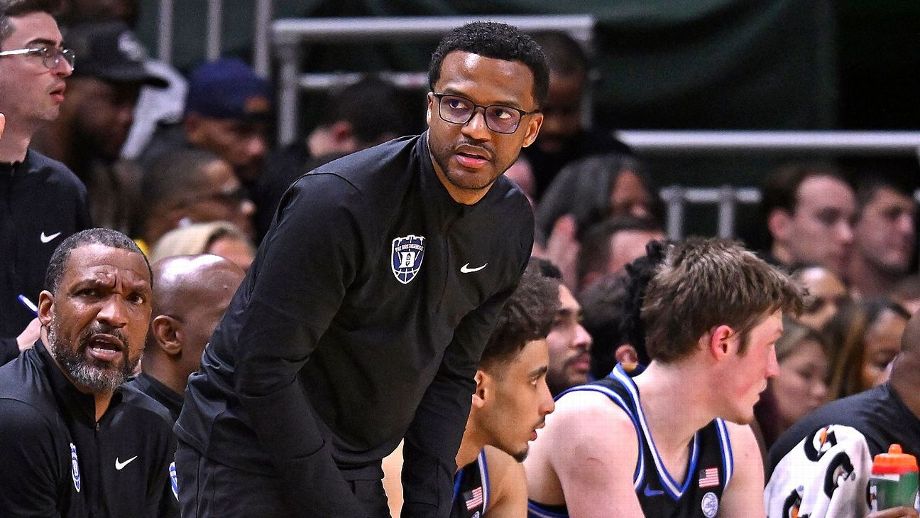The landscape of college basketball is constantly evolving, and one of the most significant aspects of this change is the shifting of coaching positions. In the 2025-26 season, several key coaching changes are expected to make waves across the men’s college basketball landscape. These changes, which can dramatically alter the trajectory of a program, reflect not only the ambition of athletic departments to succeed but also the broader trends within college athletics. As college basketball programs look to build their future, hiring the right coach can be a game-changing decision.
Coaching changes are a natural part of college sports. Coaches come and go for various reasons—some are hired to lead a program to greater success, others are let go due to underperformance, while some leave to pursue new opportunities at other programs or even professional leagues. In 2025-26, the coaching carousel promises to bring some familiar faces to new schools while also giving lesser-known assistants the chance to make their mark as head coaches.
One of the biggest storylines heading into the 2025-26 season is the shift in power conferences. With schools like UCLA and USC making the jump from the Pac-12 to the Big Ten, and the ACC experiencing fluctuating levels of success, the coaching changes are expected to be more profound than ever. Programs in power conferences often feel the pressure to succeed immediately, leading to rapid changes in coaching staff. If a coach isn’t able to meet expectations, the consequences can be swift. These conferences will likely see a significant number of hires as athletic directors work to find the perfect fit for their program’s unique needs.
At the top tier, some programs may be forced to part ways with their long-standing head coaches due to failures to meet expectations or a prolonged period of underperformance. For example, several coaches who have been staples at their respective programs could face pressure to perform, with their jobs hanging in the balance. Athletic departments at these schools must make the difficult decision of whether to stay with a familiar face or make a bold move to improve the program. These decisions are never easy, but they are crucial for the long-term success of the institution’s basketball program.
Additionally, the growth of the transfer portal has led to more instability than ever before. Coaches must deal with high turnover rates among their players, which makes continuity in leadership all the more important. As players transfer more frequently, the stability that comes from a well-established coaching staff becomes even more valuable. In this environment, some schools may choose to hire coaches who have experience in the portal and who are equipped to adapt quickly to the changing landscape. New hires might emphasize recruiting and roster building in ways that complement this evolving structure, ensuring their teams stay competitive.
Looking at the coaching landscape, some rising stars are anticipated to get their first crack at head coaching jobs. These young, up-and-coming assistants will be highly coveted as programs look for fresh, energetic leadership. Assistant coaches who have gained a reputation for working under top-tier programs will be in high demand. These coaches bring with them experience at some of the most successful programs in the country, and schools may feel that bringing in someone with this pedigree could be the key to unlocking their program’s full potential.
In 2025-26, schools in mid-major conferences are also expected to make changes. The mid-major landscape often presents an entirely different set of challenges and opportunities. These programs are typically not under the same pressure to win immediately as the power conferences, but they still need strong leadership to build consistent programs and foster the kind of success that could lead to NCAA tournament appearances. For some of these schools, the right coach can mean the difference between being a perennial contender for the NCAA tournament and struggling to stay competitive. Coaching changes at these programs might involve promoting assistant coaches or hiring established head coaches from similar mid-major programs. The search for the perfect fit at these schools is a delicate balancing act between finding someone with a track record of success and someone who has the ability to connect with players, alumni, and boosters.
Another important aspect of the coaching landscape for 2025-26 is the increasing influence of analytics in coaching decisions. As data becomes a larger part of the game, coaches who are well-versed in using analytics to improve their teams’ performance are in high demand. The way basketball is played is shifting, with an increased emphasis on three-point shooting, spacing, and pace. Coaches who can embrace these changes and utilize analytics effectively will have a competitive advantage. Programs looking to make a change in the 2025-26 season will be aware of this trend and will likely target coaches who are forward-thinking and open to using advanced metrics to enhance their teams’ success.
At the same time, the world of college basketball is continuing to embrace the international game. Many top-tier programs are beginning to recruit internationally, bringing in players from overseas to supplement their domestic talent. As these programs become more global in their approach, the demand for coaches with international experience is expected to rise. Programs with a more international roster will likely want to bring in coaches who are comfortable working with players from different cultural backgrounds and who have experience in international recruitment. A coach who understands the dynamics of the international basketball scene will be able to tap into a rich talent pool that many programs have yet to explore fully.
The financial side of college basketball also plays a role in the hiring of coaches. As programs invest more in basketball facilities, support staff, and recruiting budgets, they will expect a greater return on their investment. This means that coaches, particularly those at high-profile schools, will be held to increasingly higher standards. As salaries for head coaches continue to rise, so too does the pressure for those coaches to win. Athletic departments will continue to evaluate whether the financial commitment to a coach is justified by the success they bring to the program. A successful program can generate substantial revenue through ticket sales, media rights, and sponsorship deals, making the hiring of the right coach all the more important.
While head coaching changes tend to dominate the headlines, it is also worth noting that assistant coaching hires and changes can have a significant impact on a program. Assistant coaches are often the unsung heroes of successful programs, handling a variety of tasks, including recruiting, player development, and game preparation. As more emphasis is placed on recruiting and player development, assistant coaches are becoming increasingly integral to the success of a program. Programs looking to build strong teams will place a greater emphasis on hiring assistant coaches who are known for their ability to develop talent and contribute to a culture of success.
One additional trend in the coaching changes for the 2025-26 season is the growing importance of player development. The rise of one-and-done players in college basketball has changed the way programs view their teams. While the top programs continue to recruit the best high school talent, there is an increasing need for coaches to develop players who stay longer, as well as those who might not be NBA-bound. As more players spend multiple seasons in college basketball, the ability to develop them into well-rounded, team-oriented players becomes a crucial part of a coach’s job. Programs will be searching for coaches who can nurture talent over time, fostering development in both the individual and team aspects of the game.
As the 2025-26 season unfolds, it’s clear that the coaching landscape will continue to be shaped by a combination of evolving trends, increased pressure for success, and the ongoing shift in the way the game is played. Coaches who are able to adapt to these changes and bring new ideas to their programs will be the ones who thrive. In a sport that rewards innovation, the best coaches will be those who not only understand the game but also understand the evolving dynamics of college basketball. For fans, administrators, and players alike, these coaching changes are a reminder of how dynamic and ever-changing the world of college basketball truly is.
As programs continue to navigate the complexities of roster management, recruiting, and game strategy, the importance of making the right coaching hire will remain paramount. Whether it’s a veteran coach with a proven track record or a young up-and-comer with fresh ideas, the 2025-26 season will see numerous programs looking to take that next step forward. For some, the hiring of a new coach will mark the beginning of a new era, while for others, it will be a pivotal moment in their quest to reclaim glory. Whatever the outcome, one thing is certain: the coaching carousel in men’s college basketball for the 2025-26 season will be one to watch closely.



